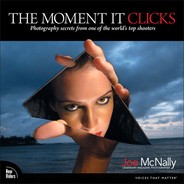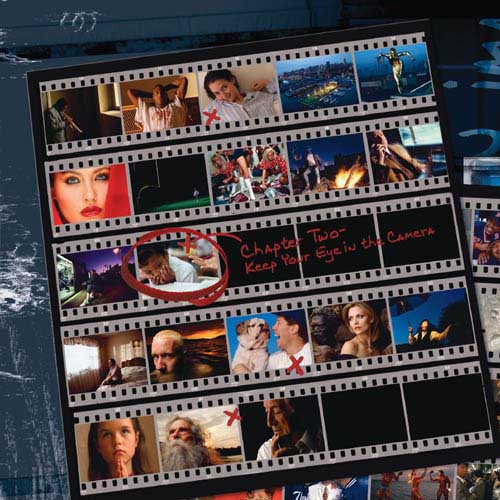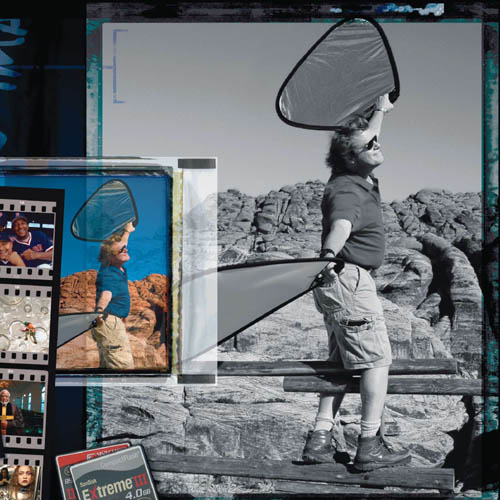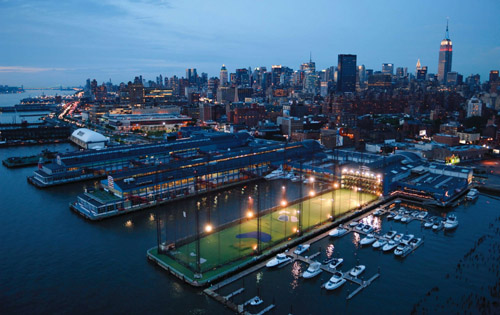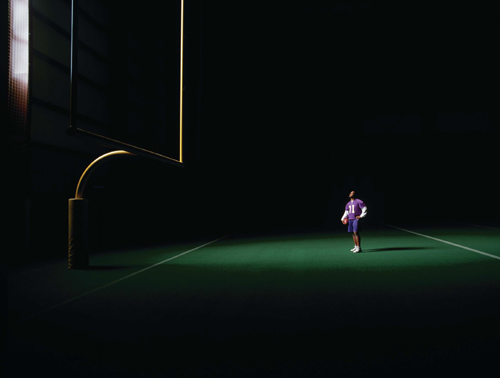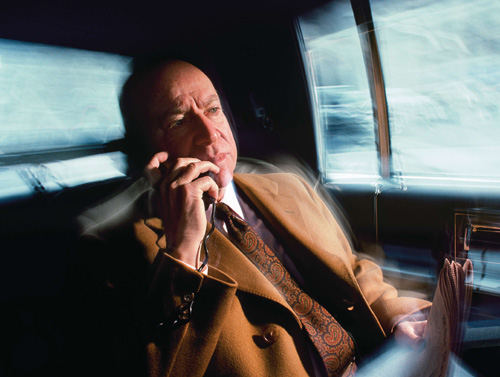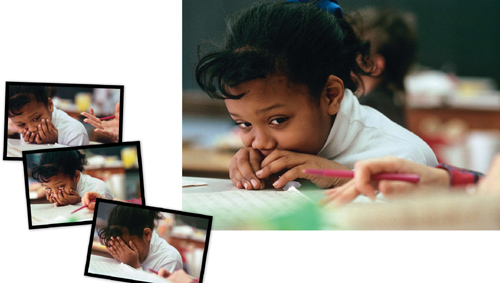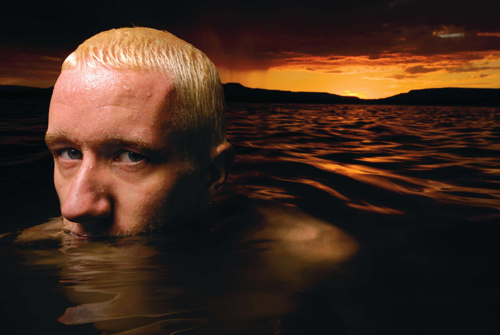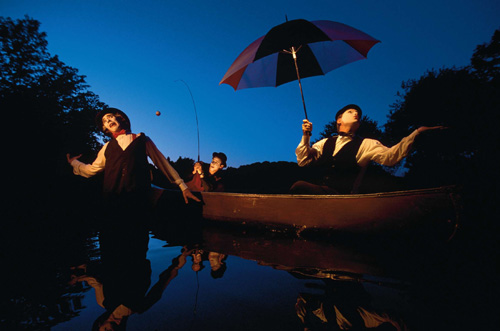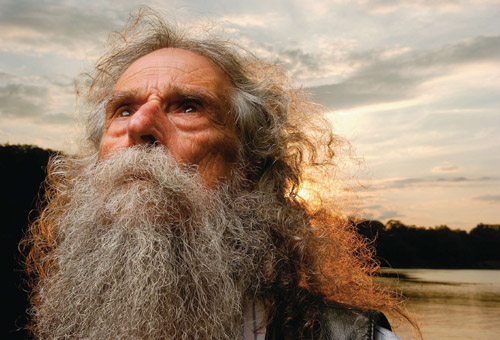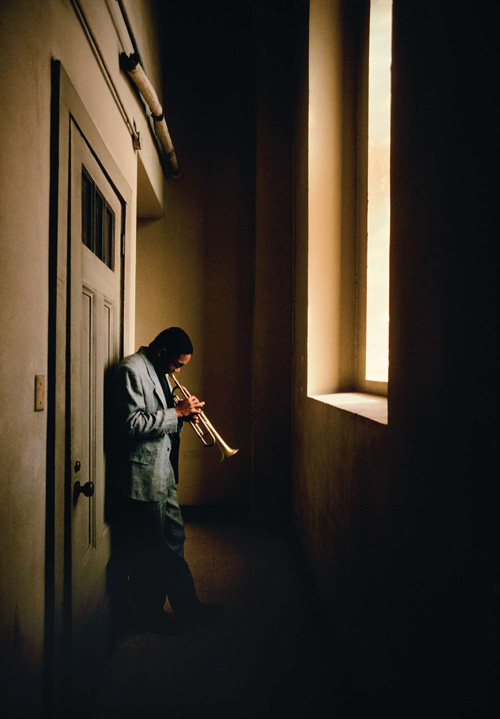
Wynton Marsalis
“A professor I had in college used to tell me that if someone won’t listen to what you have to say because you’re not wearing a tie, then put on a tie, ‘cause what you have to say is more important than not wearing a tie.”
Respect, and the lack thereof, is always a hot topic on the photog threads. Apparently, we think of ourselves as a bunch of Rodney Dangerfields with motor drives.
Well, who’s to blame for that one? Can you really expect red carpet treatment showing up in cutoffs, four-day stubble, and a t-shirt that poses the question, “Did You Get Yours Today?”
I got sent to New Orleans to shoot a pre-Super Bowl story for Sports Illustrated. Great job, and it just happened to coincide with the death of the former Mayor, Dutch Morial. There’s nothing like dyin’ in New Orleans. They have a party for you.
So I hit the street to shoot the jazz procession heading for St. Louis Cathedral. I was in dress pants, suit jacket, white shirt, and a killer tie. I was lookin’ good, if I do say so myself. (Despite the festive nature of the funeral, it was still a funeral.)
I made my way to the balcony in the church, to make general views. There was a dignified gentleman next to me holding a trumpet. He turned and looked at me. “Man, that’s a bad tie,” he said. “I’d like to take your picture,” I replied.
And the great jazz trumpeter Wynton Marsalis came over to the window for a quick portrait.
A professor I had in college used to tell me that if someone won’t listen to what you have to say because you’re not wearing a tie, then put on a tie, ’cause what you have to say is more important than not wearing a tie. He was right.
“Your light could become unpredictable. That’s a good thing. Predictable is not where your lighting wants to be.”
We go through doorways all the time. So does light. So put a light out there, in the hallway. Fly it through the door. See what happens. You just might be done.
The doorway actually frames the light, and gives it shape and edge. Might even give it some color, depending on the paint job in the hallway. If there is variation to the paint, or a shine to it, or the door itself is reflective, or has a pane of glass, your light, when bouncing around through all this stuff, could become...unpredictable. That’s a good thing. Predictable is not where your lighting wants to be.
And, if you by chance have a 3×6′ Lastolite panel,[1] one of those puppies just about fills a doorway. Instant softbox!
[1] Lastolite Panel: A kit that has both diffusion and reflective material that fits onto a rigid, collapsible frame. Comes in 3×3′, 3×6′, and 6×6′ sizes. Ideal for diffusing or flagging light sources, or simulating window light. Breaks down into a small, light duffel bag. Very roadworthy.
No Lastolite panel? A bed sheet and some gaffer tape will do.
This shot has no diffusion. I put a battery-operated strobe head outside the locker room, which had kind of a wide door opening that led out to the practice field. The light is hitting a couple of things, like a bank of lockers, which is causing the shadow behind the player’s head—a happy accident (I love those!)—that produces the sharp line between that shadow and the highlight on the wall. (This is the opposite of the highlight/shadow play on Bobby’s face, which is another happy accident I thought about later, but if I told you I was going for that or was even aware of it on location, I would be lying.) The rest of the light flies around the yellow walls of the locker room and, guess what? It gets warm! Light picks up the color of what it hits.
Unpredictability. Accidents. Not good when you’re engaging in, say, brain surgery, but when lighting...wonderful!
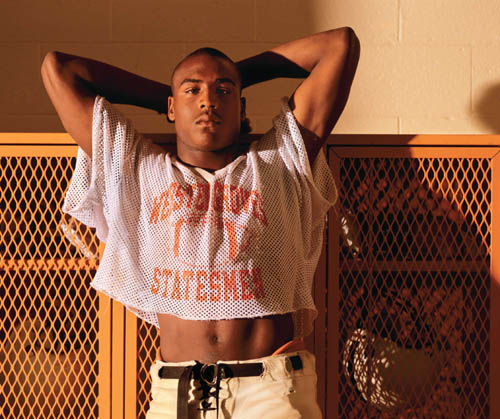
“Try it, you might like it. You never know.”
Winona Ryder had a loft bed and high ceilings in her NYC apartment. The actual bedroom area was super-tight, up a small staircase, big enough for the bed, her, and me. The ceiling was out of bounds for a bounce—too high.
So, where ya gonna put the light? There was a room directly beneath the loft, and a small channel, sort of in the shape of a strip light,[1] where light from that room could filter upwards to the bed chamber.
[1] Strip Light: A strip light is simply a long, skinny softbox. It’s great for adding an edge light around the body of an athlete.

Winona Ryder
No matter how many megapixels you’ve got inside that fancy machine you hold in your hands (and the megapixel wars are overrated), they aren’t worth beans if you don’t hold your camera steady. This needs to be worked at and practiced.
I’m right-handed, but left-eyed. Go figure. After years of straining to focus through lenses, my left eye is so much stronger than the right, I’m amazed I just don’t walk around in a circle all day long. But, being left-eyed is an advantage when holding your camera at slow shutter speeds. Years ago, Keith Torrie, a terrific Daily News shooter with a similar eye/hand change-up, pulled me aside and showed me how he held a motor-driven camera. Keith was known around the shop as one of the few guys who always made a good neg. That meant he knew what he was doing.
He showed me how he threw his left shoulder forward and stuffed the base of the motor drive where his chest and shoulder met. There are no lungs up there, no heartbeat, just muscle and bone. Work it properly and you might as well have a third leg.
Nowadays, too, you don’t have to worry about changing f-stops and focusing constantly with your left hand. So take that flipper and slap it over the outside of your main support—your right hand. Elbows into your gut, exhale, and you can shoot hand-held at speeds you never thought were possible.
“No matter how many megapixels you’ve got inside that fancy machine you hold in your hands, they aren’t worth beans if you don’t hold your camera steady.”
“This is business as usual on the Lower East Side of New York.”
Poppo and the GoGo Boys were a big deal in the performance art scene down in the alphabet streets of Manhattan. He had amazing control, turning his Day-Glo body into all sorts of twisted sculpture.
Problem was, a neighbor called it into the local precinct as a jumper in progress, and two very adrenalized NYC cops burst onto the roof. They were wired and they were pissed, having just sprinted up a six-story walkup.
They ordered me off my ladder and started barking questions. How do you explain this away and not sound like you need a shrink or some jail time? I’m trying to calm the situation down, all the while eyeballing the rising sun and watching my picture disappear.
They were having none of it until I produced my permit. Like most cities, there’s a permit office in NYC for TV and still shoots. I was covered. So, though I was still nuts as far as they were concerned, I was legally nuts. They left, and I got my shot.
[1] CTO: Color Temperature Orange. It’s an amber gel, available in various intensities, that pushes daylight towards the warm (tungsten) end of the color scale. A half-cut means you get half the warmth of the full gel.
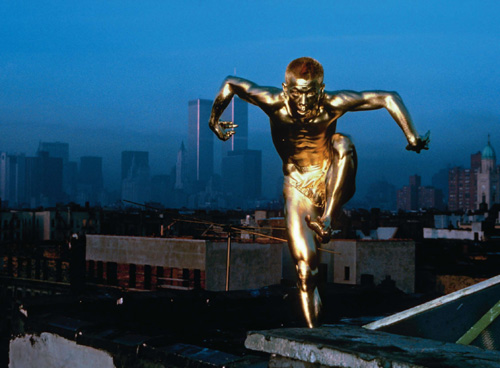
The Over-Under. No, this is not something you transact with your bookie. This is a lighting combo that gives you the classic “glamour look.”
“This is a lighting combo that gives you the classic ‘glamour look.’”

You’ve gotta taste the light, like my friend and fellow shooter Chip Maury says. And when you see light like this, trust me, it’s like a strawberry sundae with sprinkles.
The Vikes have this amazing window at one end of their practice facility that turns the whole place into a north-light studio.[1] I saw this and was foaming at the mouth. I was afraid the light would go away and I’d lose it.
[1] North-Light Studio: A studio with rich, sumptuous, soft natural light that generally comes from a north-facing window. You want good portrait light? Head north.
“Like my friend and fellow shooter Chip Maury says, you’ve gotta taste the light.”
I told Culpepper to “go out there with a football and stare at the goalposts like a little kid. Like ya never scored a touchdown before in your life.” I think he did it ‘cause he was scared. I was so crazed about the light that maybe he thought I’d hurt him before the season started if he didn’t cooperate.
He was already leery of me. When I walked in to meet him, he looked at me and said, “Whoa, you’re that guy from Fargo!”
And I always thought I was better looking than William H. Macy.
Daunte Culpepper
“Sometimes, when you’ve got a camera in your hands, you can convince yourself you’re Spider-Man.”
Sometimes, when you’ve got a camera in your hands, you can convince yourself you’re Spider-Man. I mean, Peter Parker’s a newspaper shooter, right? Quick change of uniform and he’s out there slinging webs and diving off buildings.
Or climbing rocks.
I was shooting a University of Alabama home football game at Bryant-Denny Stadium, which is like going to church with your cameras. I mean, these folks take football seriously.
The band and the cheerleaders were all lined up on the library steps doing a lively number, and I thought it would be cool to shoot them with a long lens from a higher vantage point. There’s a ceremonial rock out in front of the library, some sacred stone that actually looks sort of like they swiped it from Stonehenge. It’s about, oh, eight or nine feet high.
Perfect, I thought. I’ll climb the rock and get my long lens view! An elderly couple was standing nearby, and I asked them to hold my cameras for me, and my shooting vest. They were sort of puzzled as to why a complete stranger would hand them three very expensive, motor-driven cameras and an article of clothing, but they were willing to go along. They looked trustworthy and not capable of running very fast.
I took a few steps back and started sprinting. Wham! I went from Spider-Man to Wile E. Coyote in a heartbeat. I mean, I just pancaked myself into the side of this rock. And not content with making a fool of myself just once, I tried it a second time.
Same result. Even worse, ‘cause the very public humiliation of the first go caused me to run at it harder. I sort of slid down the face of the rock, just like in the cartoons.
I looked over at the couple, who were staring at me with their heads tilted, like a pair of puzzled cats. I got to my feet, retrieved my gear, thanked them, and staggered off. Simple fill flash in the locker room was looking awfully good.
I’m sure those folks told everybody they saw that day about how “that photographer fella” did the damnedest thing...just ran into the rock—twice!
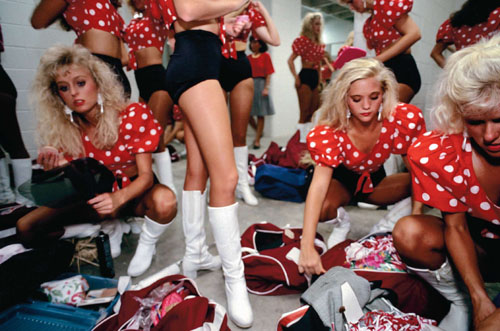
“This was guerrilla filmmaking. We got the lights ready, set the fire, and shot like mad.”
Surprise me.
That’s the best advice I ever got from a picture editor.
The art scene on the Lower East Side of New York in the mid ‘80s was, uh, surprising. Yeah, that’s the word. The subject here was David Wojnarowicz, now deceased, a painter, filmmaker, and activist. He was making kind of tribal art at the time, so I made an urban version of the village campfire out of a Department of Sanitation trash can. (Had to swipe it off the streets of the city and throw it in the back of my van. It was like a kidnapping. Pulled up, looked around, and threw it in. The van smelled awful for days.)
This was guerrilla filmmaking. We had a permit, but no police protection in what was then a very dicey neighborhood, nor did we have FDNY approval to set a fire. We got the lights ready, set the fire, and shot like mad.
He can’t be lit with just the fire. Too iffy, and he woulda been all sorts of unsharp. So we nestled two battery-operated strobes into the base of the fire, aimed up at him and lighting the whole scene. I also put a couple of ungelled strobes behind the rocks on either side of him. They do two things: separate him from the background, and give me an extra measure of sharpness.
I was lucky I did this, ‘cause the fire got big quick, and burned through one of the strobe cables near the blaze. Bye, bye light! Wasn’t aware of it at the time, of course. But without those wing lights, we would have had very little strobe punch, and thus very little sharpness in our screaming subject.
When dealing with an exposure situation like this, you have two things you have little to no control over: the deepening sky, and the very erratic fire. The strobes give you a bit of leverage, and it pays to keep the subject just on the edge of the firelight, in semi-darkness, where your strobes can take over and freeze him, while your shutter speed takes care of how much or how little fire you’ve got raging in your picture.
David was a character, to be sure. He wanted a fake Uzi machine gun, and his blue painted face was entirely his idea. I was fine with that, the odder the better in my book. We were chatting after the shoot and he asked me who I was going to shoot next. (All the artists down there knew each other, and knew Life was doing a story.)
I replied that I was shooting a portrait of an artist who had undergone sex change surgery and whose art tended to relate to that specific experience. He nodded knowingly, holding the phony weapon, his face glowing blue. “You’ll have a good time photographing her. She’s really weird!”
In New York, weird is relative.
David Wojnarowicz
“Using the flash freezes him, but allows me to use a slower shutter speed, which blurs the world outside the car. This sends a message: fast-moving, powerful man on the go.”
I spent a week with corporate big shot Larry Tisch as he was preparing to buy CBS. I needed a lead, something jazzy to kick off the story.
I put the flash in an unusual place—outside the limo, aimed at the backseat side window (it was attached using a Bogen Magic Arm, which let me clamp the flash to the limo, right by the driver’s rear view mirror).
This wasn’t frivolous. I had good editorial reasons. First, it gave me the main light off-camera (and as I mentioned before, direct flash is a disaster) and it also gave me control over the look of the picture colorwise, because the flash was gelled to make it slightly warm.
Using the flash freezes him, but allows me to use a slower shutter speed, which blurs the world outside the car. This sends a message: fast-moving, powerful man on the go. Also, he was in the backseat of the limo. Another bunch of messages: power, money, and very importantly, the photographer is right there with him, behind the scenes, inside the fence. It says to the reader: Stay with the story, you haven’t seen this before.
Sheesh, you mean I can do all that with one lousy flash?
You can, until the driver forgets the light is boomed two feet outside his window and squeezes left onto 5th Avenue, splattering it against the rear view mirror of a double-parked van.
I only had one flash with me, so I turned to Tisch and said, “You know, I think we got it!”
Larry Tisch
Bruce Dalrymple
30 magenta plus full green equals good sunset.
Uh, wanna run that by me again? In English?
One of the tough things about digital is the Fluorescent white balance setting. I use it, monkey with it, push it up and down a bit, and can still get results that look like I’m shooting through an aquarium that hasn’t been cleaned in a while.
So I often do things the old-fashioned way. I set the white balance to daylight, pop a 30 magenta filter on the lens and a full cut of green conversion filter on the flash, and boom, we’re cleaned up with good skin tones to boot. (The green flash filters are fluorescent conversion filters that come in different strengths.)
You’ve got your skin tones nice and normal, your disgusting green fluorescent foreground wrestled to the ground, and...Ta Da!...your not-so-great sunset has just exploded into an extravaganza of pinks and violets and reds, the likes of which will make your readers swoon and start thinking Tahiti, even when they’re looking at Piscataway.
“City lights go green. 30 points of magenta cleans that up. and your sunset doesn’t hate it either.”
“You can miss lots of moments with your head stuck in your LCD. Checking what just went on is a surefire ticket to missing what’s about to go on.”
I became a world-class chimper from the very first moment I held a digital camera. Click, click, click. Ooh, ooh, ooh! Click, click, click. Ooh, ooh, ooh! That damn little LCD monitor’s like crack cocaine. Better than a Polaroid and I didn’t have to wait 90 seconds in the cold weather with the thing tucked under my armpit, hoping it would develop properly.
Man, it’s cool. But also dangerous. You can miss lots of moments with your head stuck in your LCD. Checking what just went on is a surefire ticket to missing what’s about to go on.
None of these pictures is huge just on its own. It is the sequence that works, the moment-to-moment agony and apprehension of having your test paper corrected. The sum is definitely greater than the parts and if you are checking the LCD, you are not putting together the parts.
Be disciplined. Keep your eye in the camera and your head in the game. Plenty of time later to moan, cheer, laugh, or cry.
“When I look at a window, I will often say, you know, ‘nice view.’ But in my head I’m saying, ‘light source.’”
Window washer Jan Demczur saved five people trapped with him in an elevator on 9/11 by using his squeegee blade to scrape through 6″ of sheetrock. That squeegee now resides in the Smithsonian.
I photographed Jan on the world’s only giant Polaroid camera[1] immediately after the World Trade Center attack. We got to know each other a bit. He’s a likable, simple guy. Like many, his life went on hold after 9/11.
[1] Giant Polaroid Camera: Referred to as “Moby C,” it is the world’s largest Polaroid camera, capable of making life-size images 40″ wide by 80″ tall. The interior chamber of the camera is the size of a one-car garage, and it was devised by Dr. Land and the engineers at Polaroid.
About a year later, I caught up to him at his home in New Jersey. At that time, he didn’t go out much. There was a sense of isolation—9/11 lingered.
When I look at a window, I will often say, you know, “nice view.” But in my head I’m saying, “light source.”
Where does most light come from anyway? The windows! Ever wonder why the cameras are moving and the actors are dialoguing and you’re seeing all over a room in a Hollywood movie but you never see the stands and the lights? They’re all outside, sometimes down the block.
Jan’s window was huge and on the first floor. Light source! I put a strobe on the front lawn, triggered with a pocket wizard.[2] The lacy curtains were perfect as an imperfect, irregular softbox. One pop and the room filled with light. He sat on the bed, alone with his thoughts.
[2] Pocket Wizard: A highly sophisticated radio-triggering device used for firing strobes and remote cameras. Think of it as a really fancy garage door opener. (Just kidding. These are seriously effective field units.)
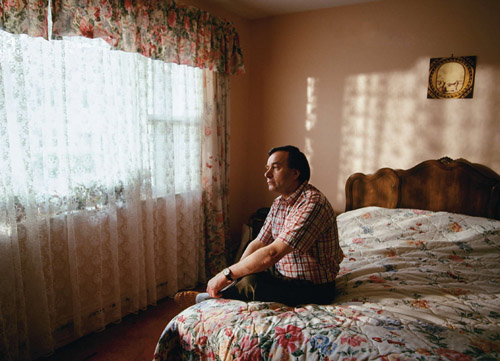
Jan Demczur
“You can extend your sunset working life dramatically by putting your subject next to a body of water.”
Make your day longer. Now that doesn’t sound desirable. But it is if you’re a photographer desperate for as much golden hour as you can get. One way to do that is to use water.
Ever notice how the streets in the movies are always wet? Did it always just rain?
Nope. But the water truck just went through. Streets glisten when they’re wet. They look cooler. You pick up f-stoppage.
When doing flash at the edge of sunset, you’re desperate to get that beautiful sky and face of your subject. Not too tough, actually. Hit him with some light, crank your strobe up at +2, underexpose the sky. No biggie.
But then, where is your subject standing? In a black hole, most likely. The green grass looks like the dark side of the moon and your environment is, well, gone. (Holy mudhead, Mackerel, more Science High! It’s...gone!)
Okay, okay, most people reading this book won’t remember Firesign Theatre. And of course, if you were a Firesign fan, you’re lucky to remember anything. ‘Nuff said.
But I digress.
You can extend your sunset working life dramatically by putting your subject next to a body of water. The water remains almost the value of the sky exposure and stays right with you till the sky is almost gone.
Some people think photographers get direction from some mystical, Oz-like, all-knowing editor: “Use the force, Luke.” Given such divine direction, brilliant, jaw-dropping photos effortlessly proceed.
It’s a bunch of bullpucky.
“As a photographer, it’s better to ask for forgiveness than for permission.”
Got a call in the middle of the afternoon, New York time, to go to Los Angeles and shoot World Series hero Orel Hershiser—the next day. I flew that night. I wasn’t gonna turn down an assignment like that. “What kind of picture are you lookin’ for?” I ask.
Exact quote, I swear: “Well, I just thought you’d have him in a studio on a pile of dirt with some light coming down on him. You know, because he’s a pitcher.”
Hmmmm....
Hershiser got the nickname “Bulldog” from Tommy Lasorda. It was all I had going in terms of an idea. I called an animal talent agency and rented the bulldog from the Jake and the Fatman series. He was so ugly, he was cute. His trainer brought him to Dodger Stadium. Orel loved it. I put them on the pitcher’s mound, faces close together. We smeared bacon grease on Hershiser’s cheek—the dog went nuts, and the hero of the World Series had a ball.
Sometimes you receive inspiration and direction, divine or editorial. Most of the time, baby, you’re on your own.
When you rent from an animal agency, it gets very pricey, very quick. A dog, like this bulldog, goes for around $1,000 (in L.A. anyway, where this was taken). The average range is about $500 to as much as $8,000. I know the $8,000 is right because as of the writing of this book, I’m renting an elephant. Her rate (in New York) was $8,000, and the kicker was, I couldn’t use her because she was already booked. I kid you not (I wish I could get $8,000 a day). Because she wasn’t available, I found an elephant in L.A. (named Suzie) that was only $6,000 a day, plus overtime. I kid you not.
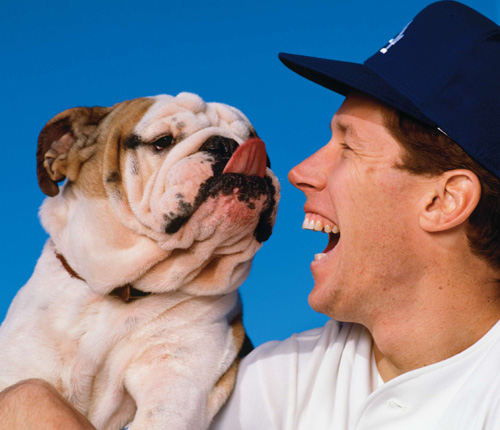
Orel Hershiser
While I was in the planning stages to shoot Michelle Pfeiffer with the National Gem Collection, I pretty much had the run of the Smithsonian. I got into a lot of back hallways and storage areas, looking for pieces of pictures.
I saw these life masks in a hallway, forgotten, gathering dust. Loved ‘em immediately. The people at the Smith rolled their eyes, but were gracious.
It didn’t stop there. I needed them moved and my instructions were explicit. Handle them from the base. Don’t dust them!
“Michelle’s living, breathing Hollywood glamour. The diamond’s a still life. Both are beautiful and both need to be lit differently, just all at once.”
They looked at me like I was nuts. But the dust gave them character and patina, and the feel of an artifact. They were ancient and crypt-like, and made a good frame for Michelle’s flawless skin. Okay, so I saw Raiders of the Lost Ark way too many times.
Diamonds are cut on a bias for reflectance and brilliance. They need hard light to shine. Michelle made it clear there was to be no hard light near her face. She was real straight about it.

Michelle Pfeiffer
“I don’t like mimes, but they kind of give you a free pass. You don’t have to explain how strange a picture is, ’cause, well, you’ve got a mime in there.”
I don’t like mimes, but I’ve used them in shoots on numerous occasions just because they’re so damn odd. It gives you a free pass. You don’t have to explain how strange a picture is, ‘cause, well, you’ve got a mime in there.
When I shot this, in the muck of the Prospect Park Lake in Brooklyn, my assistant was a 6′3″ cowboy out of Colorado named Garth. He was bewildered by the painted, wordless men. Maybe they don’t have mimes in Colorado.
He came up to me at the camera and whispered, “Hey Joe, if I beat the $#!& out of one of these mimes, do you think he’d say something?”
FYI, this was an illustration for the versatility of the Nikon SB-26, which had an internal slave eye.[1] There’s a strobe in the umbrella, one in the boat, and one to camera left, lighting the hooked mime.
[1] Internal Slave Eye: A photo eye or trigger built in to a flash unit, sensitive to sudden increases in light, which will trigger the flash.
I’m not sure, but I think I’ve always wanted to say, “hooked mime.”
This doesn’t have to be rocket science.
I was shooting a story on prayer and working with a lovely family who had great-looking kids. One of the young daughters had the face of an angel.
So I’m struggling...wait a minute. She’s got the face of angel. I’m doing a story on prayer. Whack! That’s why I’ve got a flat forehead.
Threw a bed sheet over a window with hard sunlight pouring in. Turned the room into a studio. Swiped a macramé tablecloth and pinned it to the wall behind her for texture.
“Throw the bed sheet over the window, and watch the room start to glow.”
She got prayerful. I got a cover. It took about five minutes.
FYI, I am a bed sheet thief. If I think I need a broad light source, I swipe the bed sheet from the luxurious Motel 6 I might have stayed at that night and stuff it into my gear bag. There’s no weight and it takes up no space.
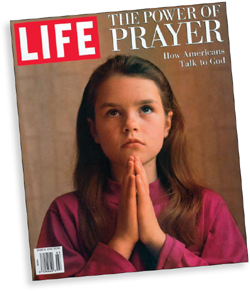
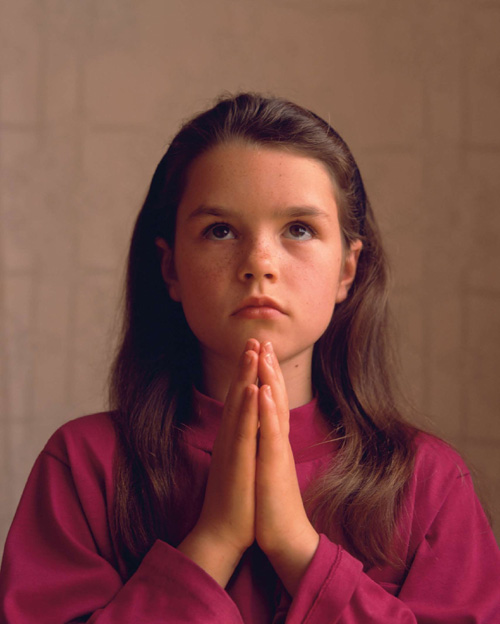
When it comes to skin tones, warm is generally better than cool. This is a personal preference, you understand, and it stems from the fact that I feel people look better with a little warm glow, as if they’re sitting at a nice, candlelit table at the Four Seasons, rather than looking like an extra on The Sopranos who’s been hanging on a meat hook for a few days.
Of course, it depends on the mission. You can go either way—the important thing is to remember to choose. Don’t let the gear choose for you. WARNING! WARNING! Technical talk starts here!
“When it comes to skin tones, warm is generally better than cool. Of course, it depends on the mission. You can go either way - the important thing is to remember to choose. Don’t let the gear choose for you.”
“If you want something to look interesting, don’t light all of it.”
John Loengard, the picture editor at Life, always used to tell me, “If you want something to look interesting, don’t light all of it.” He’s right.
Follow your instincts. Here’s the deal: the client was Parade magazine and they print on a paper grade that, well, let’s just say it’s not the best, so they always need color or want color. They kept telling me: no beiges, no browns, make sure you have color. My imagination was all about something really moody and reflective about Tony at this point in his life, and lit in a minimal way on black. Now black is generally not the ticket for success when it comes to a cover.
I had Tony for two hours and I ran four sets: a black, a white, a gray, and a somewhat cheesy painted sunset. I figured the black set would be more of a picture for myself than anything else—yet another unpublished favorite.
We played Sinatra all day in the studio and Tony was in a groove, as he always is. He loved the old prop microphone and he turned that wonderful face into the one light, and it was the picture of the day—and the cover, a rare twofer.
[1] Octabank: A large softbox, slightly over 6′ wide. A source of very soft, reflected light. An industry standard for both studio and location portraiture.

Tony Bennett
